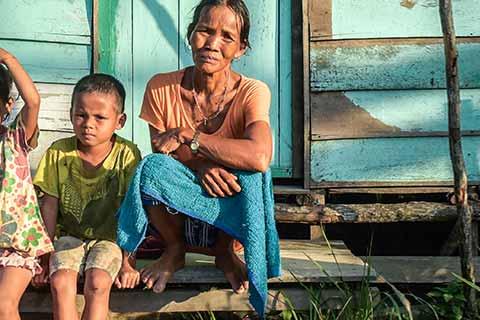I recently attended the 9th GLTN Partners Meeting in Nairobi, Kenya, which brought together a hundred land experts from Africa and around the world; the Land Portal Foundation is proud to be a GLTN partner. I spoke in a thematic session focused on land data, showcasing national, regional and global achievements in land monitoring. It was a great opportunity to hear from colleagues working at the forefront of land monitoring at UN-HABITAT, the Kenya National Bureau of Statistics, and the Asian NGO Coalition for Agrarian Reform and Rural Development (ANGOC).
My contribution to this event was to explain how the Land Portal Foundation, as a non-profit organization operating at the intersection of the open data and land governance communities, has been privileged over the past 5-8 years to be in a position to observe some interesting trends affecting the land governance data landscape. We have identified at least four of them.
The first trend is the fact that the effort to collect land data relevant to monitoring the Sustainable Development Goals (SDGs) has created momentum, spurring many interesting and relevant data initiatives in the sector. The official data collection process for the SDGs involves national statistical offices and custodians, but their intense work has created a ripple effect and positive momentum within global and local civil society and information intermediaries, who have played a critical, active support role in contributing to this official process through advocacy, data collection, and international monitoring efforts. This intense participation shows that there is widespread recognition that land data is a core element for achieving sustainable development in any jurisdiction.
The second trend is that despite the amount of data being collected, the use of data remains a challenge. This is for two main reasons:
-
As a cross-cutting issue, land data is highly fragmented and spread across multiple databases and data points, making it difficult to get a clear picture. Institutions and organizations produce information in silos based on their own needs and mandates.
-
Data is still incomplete, closed, and inaccessible, making it difficult to aggregate, monitor, and use. Most land data discussions remain uncoordinated and siloed, resulting in a gap between data collection efforts and real data needs.
The climate crisis and the urgent need to collect data differently across sectors is evidence that this should have happened long ago.
The third trend is a growing recognition that open data should serve a purpose. Data is not an end in itself, but should be a means to change. Open data has tried to address this. If we look at the past, there have been at least three waves of open data. The first wave was where the institution of FOI laws made national government data available on request to journalists, advocates, and activists. A second wave of Open Data, enabled by the rise of open source and Web 2.0, called for governments to make their data open by default to civic technologists, other government agencies, and businesses. A third, more recent wave of open data takes a much more purpose-driven approach than previous waves. It seeks to break down data silos and unleash the public good potential of data for the digital age. It seeks not just to open data, but to do so in a way that focuses on impactful reuse, particularly through cross-sector collaborations and partnerships. We are deeply involved in this third wave where open data could drive change and help address current challenges such as climate, environmental or food crisis and be a vehicle for cross sectoral collaboration.
The fourth trend is that the historical power dynamics of land are increasingly intertwined with the power dynamics of data. This realization is driving the need to include more actors and more voices in the data conversation. It is not only about what the data says, but also about who owns the data. This means enlarging the focus of the conversation to include issues related to data privacy, data justice, and data ethics, data sovereignty, data justice, or data feminism.
In this complex landscape, as a leading advocate for open land data, the Land Portal Foundation seeks to drive progress in three directions:
-
supporting actions that help information providers and governments make data more open and accessible;
-
engaging stakeholders in a constructive and inclusive conversation about data; and
-
building data alliances within and beyond the sector.
Our State of Land Information (SOLI) program is an example of such an alliance. Together with the Open Data Charter, the Open Government Partnership, the Global Data Barometer, and the Data for Development networks, we are driving an open data movement that has developed a set of integrated tools and resources to measure, document, assess, and ultimately improve the state of land data at national and global levels, and to support stakeholders in achieving a more open land data ecosystem in support of data equity and inclusion.
We believe that land data is a public good and should, therefore, be free, open and accessible to everyone.



